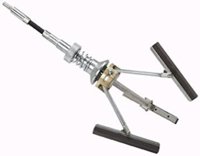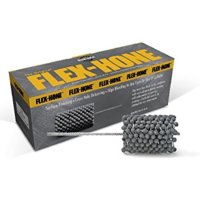Hey Pete, as much as I wish I could take the blue pill, I'm resigned to the fact that the red pill is the way to go. I've got over 34,000 kms. on her and no-ones been in there yet. Plus it sat for 9 years, drying out.
Here's where I'm at with this:
- Valve backs are oil contaminated, 2M diagnosed awhile back that seals at least are gone and a top end job is really what's in order.
- 2M also mentioned there are likely other things in there needing attention, only one way to find out.
- Piston tops as well are oil contaminated with baked on oil from who knows for how long. Only one best way to clean them.
- My good compression numbers could in fact be from oil leakage as 5twins has suggested. Only one way to find out.
- Discussed some of this in my thread with gggGary this morning and he didn't say the valve seal change on the bike wouldn't work but the valves need to be cleaned up and he said his meatball mechanic method in the engine is really a last ditch effort to save pulling an engine. He suggests riding it through the season and rebuilding it this winter.
- Don't know what shape the valve guides are in. Don't know if this is a legitimate concern but it is a question I have.
- Plus the other bits that can be measured and verified while in the neighborhood.
- I haven't found a lot of black bits during oil changes and we know they can come from different sources. So who knows what shape the "front" guide is in.
- I'm running out of timing plate adjustment room. I am pretty convinced my cam chain is really stretched. I used to set it to Haynes/Clymer manuals specs when I was tuning it up years ago, but can't remember how soon or long after I owned it that I really got to tuning it up right, other than just doing oil changes. Also I get a lot of cam chain ticking that lasts a lot longer than the 30 seconds that 5twins had if I set it the way it should be.
- As mentioned earlier in my thread, I swapped in the advance springs from my other bike, no joy, rpm's will still hang when decelerating. Today I swapped in the weights. Haven't had a chance to ride it yet, but still get the hanging up in my shop. Gotta be the cam chain.
- As 5twins said today, honing and new rings may be all that's required. Won't know without having a peek. And if it needs more, I want to know now, and not after putting it back together.
- This isn't an impossible job, and I have so far, and know I will continue to benefit from the help of some pretty amazing people around this place to steer me through.
- Then there's these personal thoughts. I'm going to learn a whole bunch more, which is good. I enjoy learning, in fact it's kind of a drug. I'll know so much more about how these work and how to read and maintain them better. And....I'll have the peace of mind of knowing that all's good and nothing was missed or ignored. There won't be that nagging question of "Should I have done.....?"
Boy, is this a list to convince you or me Pete? LOL
2M, gggGary and 5twins have all been helping out here and none of them have said don't do it. They know my level of shade tree mechanics abilities and they haven't said don't do it, rather they are encouraging me and giving me the advice and tools (literally pointing to them even) to accomplish this.
I'm not overwhelmed by the thought anymore and am actually looking forward to doing this, seeing whats going on in there, and getting her happy again., She deserves it.
For me, I'm going to set up an engine rebuilding bench in my basement and this will give me a nice project to work on over the winter as gggGary and 5twins say. Might even slip in some carb work.....lol.
But I can hear it now, "Can't you leave that bike alone for the winter! Now you're rebuilding a motor in the basement!" Oh boy.
If you guys think I'm wrong on any of this or have missed anything, please straighten me out.
I'm all ears and you know I appreciate all your help and advice.
"Honey, where's the baking soda?"


